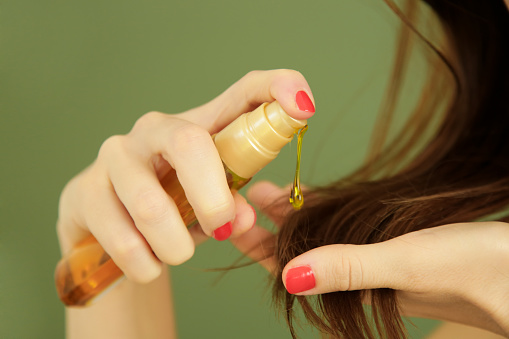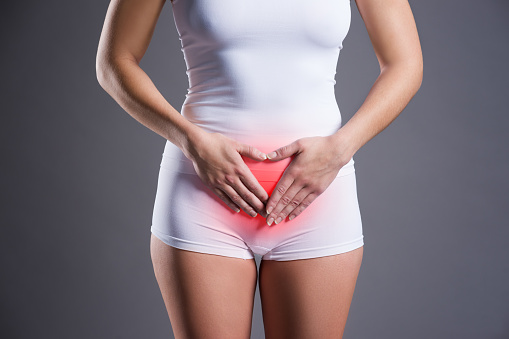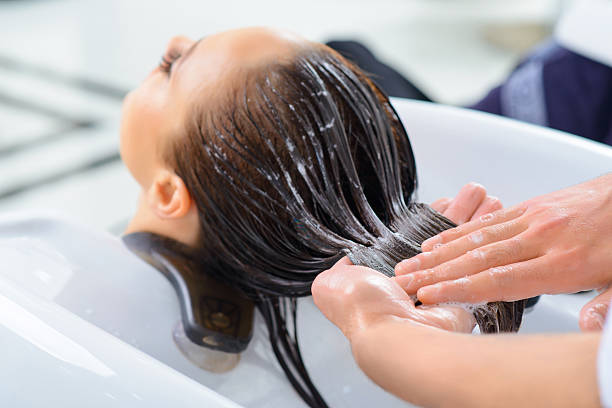
It’s hard to believe, but science has recently suggested a link between hair straighteners and relaxers and uterine cancer. Recent studies have shown that regular use of hair straighteners and relaxers may increase a woman’s risk of developing uterine cancer. The chemicals in these products may damage the DNA of the cells in the lining of the uterus, leading to the development of cancerous tumors.
In this post, we’ll take a closer look at the potential link between hair straighteners and relaxers and uterine cancer and what you can do to reduce your risk.
What is Uterine Cancer?
Uterine cancer is a form of cancer that develops in the uterus. The uterus comprises two types of tissue: the inner lining, called the endometrium, and the outer layer of muscle, called the myometrium.
Most uterine cancers start in the endometrium, the inner lining of the uterus. Uterine cancer is often found at an early stage because it frequently causes abnormal bleeding, which can be a symptom.
There are two main types of uterine cancer: uterine sarcoma and endometrial cancer. The most common type of uterine cancer is endometrial cancer. Uterine sarcomas are much less common but tend to be more aggressive.
Do Hair Straightening/Relaxer Products Cause Uterine Cancer?
You might be wondering if hair straighteners and relaxers can cause uterine cancer. Science has found potential links between uterine cancer and some of the ingredients in these products: phthalates, DEHP, and formaldehyde.
Phthalates are unique compounds, also referred to as “plasticizers,” that manufacturers use in the majority of hair relaxers to give them plastic-like durability and flexibility.
Scientists have established a direct causal relationship between the environmental phthalate MEHHP and uterine cancer, the most prevalent malignancy in women. Environmental phthalates are used by manufacturers in a wide range of industrial and consumer goods, and they have also been found in food and medical supplies. Despite being harmful, they are nonetheless not banned in the US at the moment.
Di-2- ethyl hexyl phthalate (DEHP) is the most common phthalate present in hair relaxers. Many of the metabolites that DEHP breaks down into upon entry into the body are extremely hazardous.
In addition to cancer, DEHP and its metabolites are also known to cause developmental abnormalities, endometriosis, reproductive dysfunction, and metabolic syndrome.

Women who use hair products containing formaldehyde may be at a higher risk of developing uterine cancer. Formaldehyde is a toxic chemical used in many consumer products and has been linked to cancer.
Formaldehyde releasers are found in hair products, shampoo, body wash, styling products, nail polishes, and other common consumer items.
Hair products that contain formaldehyde or formaldehyde releasers can be particularly dangerous. Women who frequently use hair straighteners, curlers, and other hot tools may be at greater risk of developing uterine cancer than those who do not use these products.
Formaldehyde releasers, also known as quaternary ammonium compounds or QACs, are used in hair-relaxing products to preserve and prevent mold in shampoo, body wash, styling products, nail polishes, and other common consumer items.
In 2016, the FDA approved pursuing a ban on its use in cosmetics in 2008 because it’s considered an environmental carcinogen by the International Agency for Research on Cancer (IARC).
Who is at Risk?
The answer is women who regularly use hair relaxers, straighteners, and African-American women.
According to a recent study, 1.64% of women who had never used hair straighteners would, later on, develop uterine cancer, but that risk rose to 4.05% for those who used them frequently.
This association is strongest among African American women and those who started using hair straighteners or relaxers before age 20. This is the case since black women use hair straightening or relaxing products and tend to start using them earlier than women of other races and ethnicities.
Due to increased scalp absorption from using hair products, particularly straighteners, which may be aggravated by burns and lesions from using them, chemical exposure from using hair care products, particularly straighteners, may be more worrying than from using other personal care products.
How to Reduce Your Risk
So now that you know the risk, what can you do to reduce your exposure? Here are a few tips to safeguard yourself:
- Limit the use of heated hair appliances. Try to evenly distribute the heat and avoid high temperatures when you use them.
- Use a heat protectant spray on your hair before using any heated styling tools.
What are the Symptoms of Uterine Cancer?

The most common symptom of uterine cancer is abnormal bleeding, including bleeding between periods or after menopause. Other symptoms are pain during sex, pelvic pain, and pain when urinating.
If you experience any of these symptoms, it’s important to see a doctor right away. While other things can cause these symptoms, it’s always better to be safe.
Conclusion
The research is ongoing, but there is a significant link between the use of hair straighteners and relaxers and an increased risk of uterine cancer.
If you’re concerned about your risk, talk to your doctor. They can help you weigh the pros and cons of using these products and make the best decision for your health.
In the meantime, there are some things you can do to minimize your risk. When using hair straighteners or relaxers, avoid direct contact with your skin. Use a heat-protectant spray and always follow the manufacturer’s instructions. And be sure to take breaks from using hot tools to give your hair and scalp a chance to recover. By taking these precautions, you can help protect yourself from the risk of uterine cancer.
Published by HOLR Magazine.


